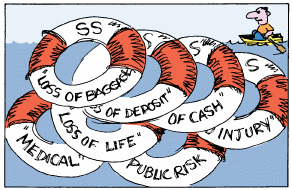
|

Why good lighting on the stairs reduces liability risk for leisure venues Parker’s case provides comfort to leisure venues - clubs, hotels and restaurants that good lighting on the stairs will help fulfil their duty of care to protect their guests from injury. The case is Parker v City of Bankstown RSL Community
Club Ltd [2015] NSWCA 246, a unanimous decision of the
Court of Appeal, Supreme Court of New South Wales (Macfarlan
JA with whom Simpson JA and Sackville AJA agreed). The court
upheld the decision of the trial judge - Adamson J [2014]
NSWSC 772 that the Club was not negligent when Parker fell
down the stair, because the strip lighting on the stair
provided adequate warning of the presence of the stair. Parker’s case – the facts and the decision Mrs Parker was attending the Christmas dance concert held by a dance school, to watch her young daughters perform. It was held in the auditorium of the Bankstown RSL Club on a Saturday afternoon. Mrs Parker and her family were seated at a table on the highest of three tiers, away from the stage. They had a good view of the stage because the middle tier was one step down, and the lower tier another step down. Several hundred people were in the audience. Mrs Parker was making her way through the tables to collect her children when she turned, and on her version, failed to see the step down to the middle tier, and fell heavily. She was taken to hospital in severe pain, and underwent an operation upon the radial head of the bone in her right arm. At the time of the incident, the overhead house lights were down because a performance was underway on the stage. There was strip lighting on the inside edge of the step between the riser and the tread (at a 45 degree angle to both). There was also a wide metal strip on the nosing of the step. Strip lighting is a series of small lights in a plastic sheath in a continuous run. Many people know it as the strip affixed to the floor on aircraft aisles which is used as emergency lighting. Factually, the case turned upon: (1) whether the strip lighting was on; and (2) whether the strip lighting was adequate to warn of the stair.
The trial judge concluded that the Club had fulfilled
its duty of care and that Mrs Parker had sustained
injury because she had failed to take reasonable care
for her own safety. Therefore, her claim failed. What safety precautions should leisure venues take for stairs? Stairs are an obvious safety hazard. Clubs, hotels, restaurants and other leisure venue operators owe a duty of care to their guests to make using the stairs as safe as possible. Leisure venue operators should consider taking these safety precautions for stairs:
|
|||||||||||||||||||||||||||||||||||
|
© Copyright 2022 Cordato Partners |
||||||||||||||||||||||||||||||||||||